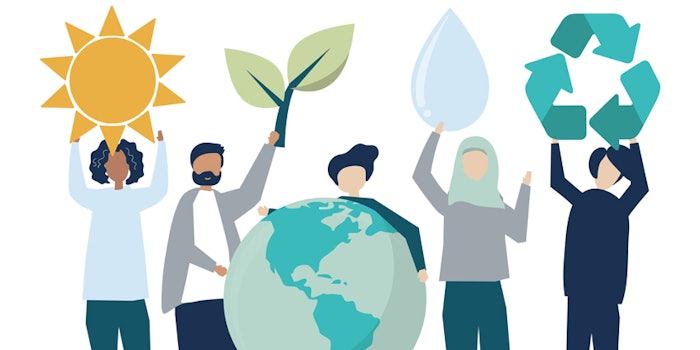
L’Oréal is ramping up its sustainability efforts through a program called “L’Oréal for the Future.”
According to the company, “our commitments toward 2030 mark the beginning of a more radical transformation and embody our view as to what a company’s vision, purpose and responsibilities should be to meet the challenges facing the world.”
L’Oréal also stated that, unlike its first program, the new commitments will not just focus on L’Oréal’s direct impact. The commitments will reportedly tackle L’Oréal’s indirect, extended impact, related, for example, to the activity of our suppliers and the use of our products by consumers.
4 Commitments for 2030
1. Fighting Climate Change
- By 2030, L’Oréal will reduce by 50% on average and per finished product, the greenhouse gas emissions linked to the transport of its products, compared to 2016.
- By 2030, L’Oréal’s strategic suppliers will reduce their direct emissions (scopes 1 and 2), by 50% in absolute terms, compared to 2016.
- By 2025, all L’Oréal’s sites will achieve carbon neutrality by improving energy efficiency and using 100% renewable energy.
- By 2030, L’Oréal will innovate to enable its consumers to reduce the CO2 emissions resulting from the use of its products by 25% compared to 2016, on average and per finished product.
2. Managing Water Sustainability
- By 2030, L’Oréal will evaluate all its formulas thanks to its environmental test platform, to guarantee they are respectful of all aquatic ecosystems, whether continental or coastal.
- By 2030, L’Oréal will innovate to enable its consumers to reduce the CO2 emissions resulting from the use of its products by 25% compared to 2016, on average and per finished product.
- In 2030, 100% of the water used in L’Oréal’s industrial processes will be recycled and reused in a loop.
- In 2030, all of L’Oréal’s strategic suppliers will use water sustainably in the areas where they operate.
What the company has achieved so far:
- L’Oréal has reduced the amount of water used in its plants and distribution centers by 51% compared to 2005, per finished product.
- Four of its factories are “waterloop factories,” meaning that all the industrial water is retreated, recycled and reused in a loop.
3. Respecting Biodiversity
- By 2030, 100% of the bio-based ingredients for formulas and packaging materials will be traceable and will come from sustainable sources. None of them will be linked to deforestation.
- To limit its impact on natural habitats, L’Oréal is committing to holding flat, by 2030, the total land occupancy vital to the sourcing of its ingredients, compared to 2019.
- By 2030, 100% of its industrial sites and all its operated buildings will have a positive impact on biodiversity, compared to 2019.
- 100% of paper used for the instructions included with products is certified as sustainable.
What the company has achieved so far:
- In 2019, 85% of new or renovated products had an improved environmental or social profile.
- 100% of its supplies of palm oil, palm oil derivatives and palm kernel oil derivatives have been certified sustainable in line with RSPO criteria since 2012.
4. Preserving Natural Resources
- By 2030, 95% of its ingredients in formula will be bio-based, derived from abundant minerals or from circular processes.
- By 2030, 100% of the plastics used in its packaging will be either from recycled or bio-based sources (it will achieve 50% by 2025).
- By 2030, L’Oréal will reduce by 20% in intensity the quantity of packaging used in its products, compared to 2019.
- By 2025, 100% of its plastic packaging will be refillable, reusable, recyclable or compostable.
- By 2025, 100% of its new displays will be eco-designed, considering circular economy principles for end of life management and 100% of its new free-standing stores will be designed and built following its sustainability principles.
- By 2030, 100% of the waste generated in its sites will be recycled or reused.
What the company has achieved so far:
- Today, 59% of L’Oréal’s raw materials are derived from renewable sources.
- In 2019, the Group replaced virgin materials with 13,204 tons of recycled materials (PCR), an increase of 52% over 2018.
- In 2019, L’Oréal recovered 97% of the waste that could not be avoided at source, by reusing or recycling, or harnessing it to produce energy.










